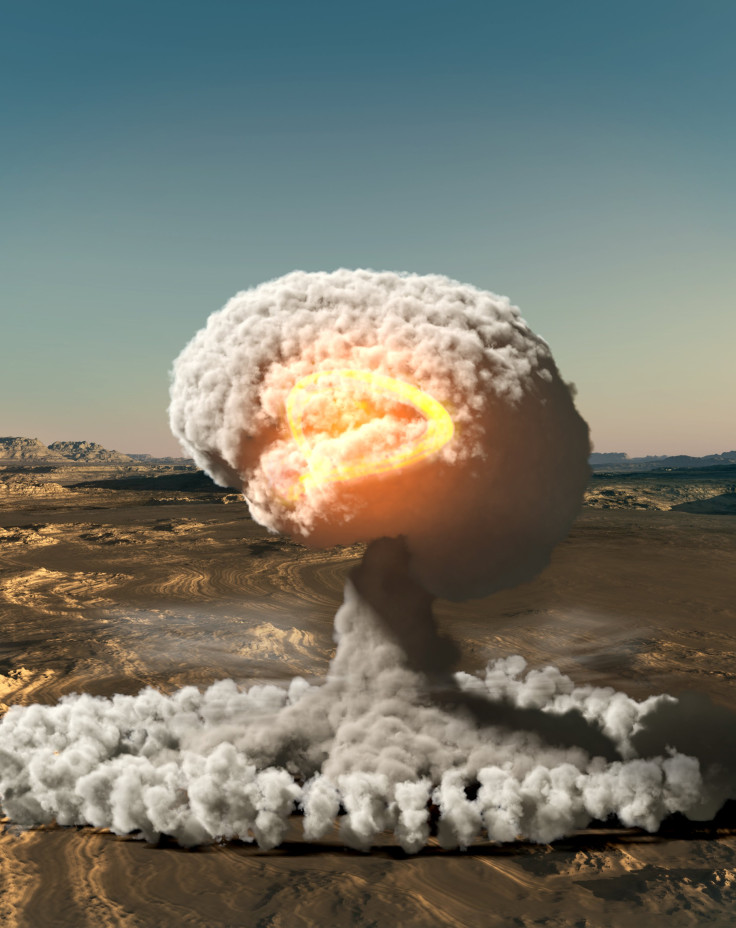Atomic Bomb Residue Confirms Adults Make New Brain Cells

Researchers have found that our brains make about 1,400 new neurons a day, in a new study that used leftover radiation from 1960s nuclear testing to track the lives of neurons. The new technique for dating neurons could provide insight into psychiatric disorders like depression. For decades, scientists believed that we were born with a finite number of neurons, and although we might make a few more during childhood, we had a limited and dwindling supply as adults. In the 1960s, a heated controversy began after a few scientists found evidence for the creation of new neurons — known as 'neurogenesis' — in adult rats.
It wasn't until 30 years later that scientists finally accepted adult neurogenesis occurs in mammals. Although most of this work has been conducted in rodents and small monkeys, it is thought that new adult neuons are born in only two places in the brain: the nose's olfactory bulb and the hippocampus, which is involved with creating and storing memories.
This memory center is also the first brain region to lose neurons during Alzheimer's disease.
But debate has remained over whether higher primates, including humans, generate sufficient numbers of new neurons for it to make a difference to overall brain function.
"We provide the first evidence that there is substantial neurogenesis in the human hippocampus throughout life, suggesting that the new neurons may contribute to human brain function," said senior study author Jonas Frisén of the Karolinska Institute, Sweden.
To resolve this debate, scientists came up with a clever solution that relied on the most destructive man-made weapon ever constructed: the atomic bomb.
More than 50 years ago, above-ground nuclear weapons testing significantly elevated the atmospheric levels of carbon-14, a nonradioactive form of carbon that binds to DNA. Carbon-14 is absorbed by plants during photosynthesis, and so everytime we eat a veggie, we consume a bit of carbon-14 residue from nuclear weapons testing.
Nukes were detonated above ground starting in 1945, but testing revved up in the 1950s and 1960s during the peak of the Cold War. The US-alone detonated 210 aboveground nuclear weapons, before a 1963 nuclear test ban treaty pushed everything underground. After 1963, the air levels of carbon-14 began declining as the isotope was absorbed by the biome or escaped our planet's atmosphere.
Carbon-14 dating is used to estimate the ages of fossils, and Frisén and his colleagues assumed the same could be done for people's cells.
The introduction of massive quantities of carbon-14 during the Cold War followed by its sudden decline essentially provided a timescale with which to measure the age of cells. The researchers guessed that people who lived through the Cold War should have higher amounts of carbon-14 in their cells and that the levels should decline in individuals born after 1963.
They collected tissue specimens from deceased subjects, whose ages ranged from 19 to 92, and found that they could estimate the age of cells using carbon-14 in the DNA. This new dating technique provided some shocking results when they used it for the brain.
The researchers found tremendous amounts of neurogenesis in the hippocampus, the brain's memory center, with at least one-third of the cells being renewed during a lifetime.
Along with 1,400 new neurons being made each day, they discovered the rate of neurogenesis didn't really decline with age in humans, which opposed findings in rodents. The researchers concluded that we continue making new neurons into our 40s.
Another difference from rodents was observed in the nose's olfactory bulbs. While mice have abundant neurogenesis in the nose, human don't, a finding which was published in a separate study in 2005.
The 'last-in, first-out' rule also seems to apply as new adult neurons appeared to die off before neurons that people had from birth.
Brain specimens were collected from autopsy cases from 2000 to 2012 and were provided by the Swedish National Department of Forensic Medicine, the Department of Neurology of the Miller School of Medicine Brain Endowment Bank, and the Department of Pathology of the University of Debrecen.
Aside from revealing information about the life-cycle of human neurons, this technique could provide clues into why people develop depression.
"It has long been suspected that depression is related to reduced hippocampal neurogenesis," concluded Frisén. "And our findings suggest that new and more effective antidepressants could potentially be developed to target this process."
Source: Spalding KL, Bergmann O, Alkass K, et al. Dynamics of Hippocampal Neurogenesis in Adult Humans. Cell. 2013.
Published by Medicaldaily.com



























